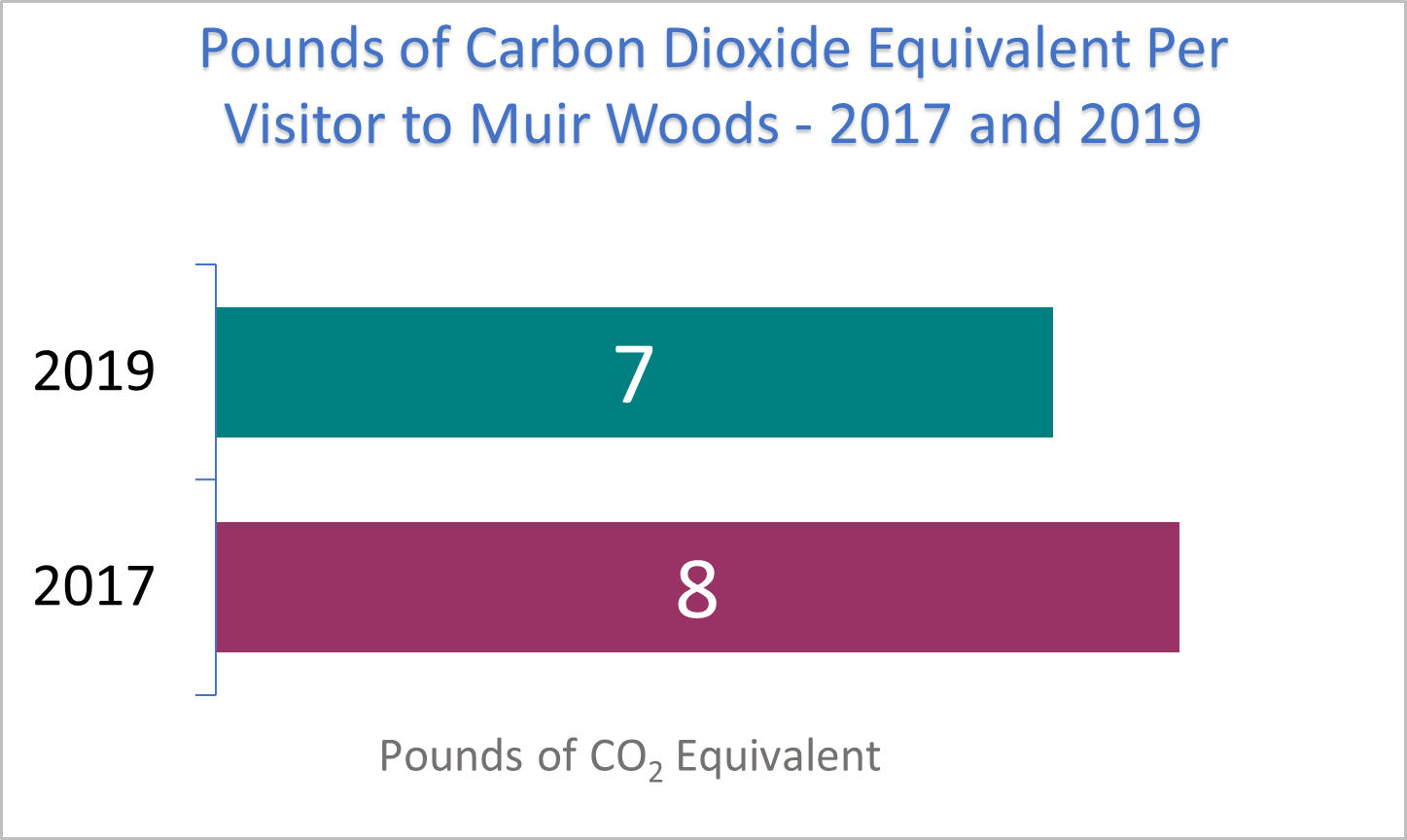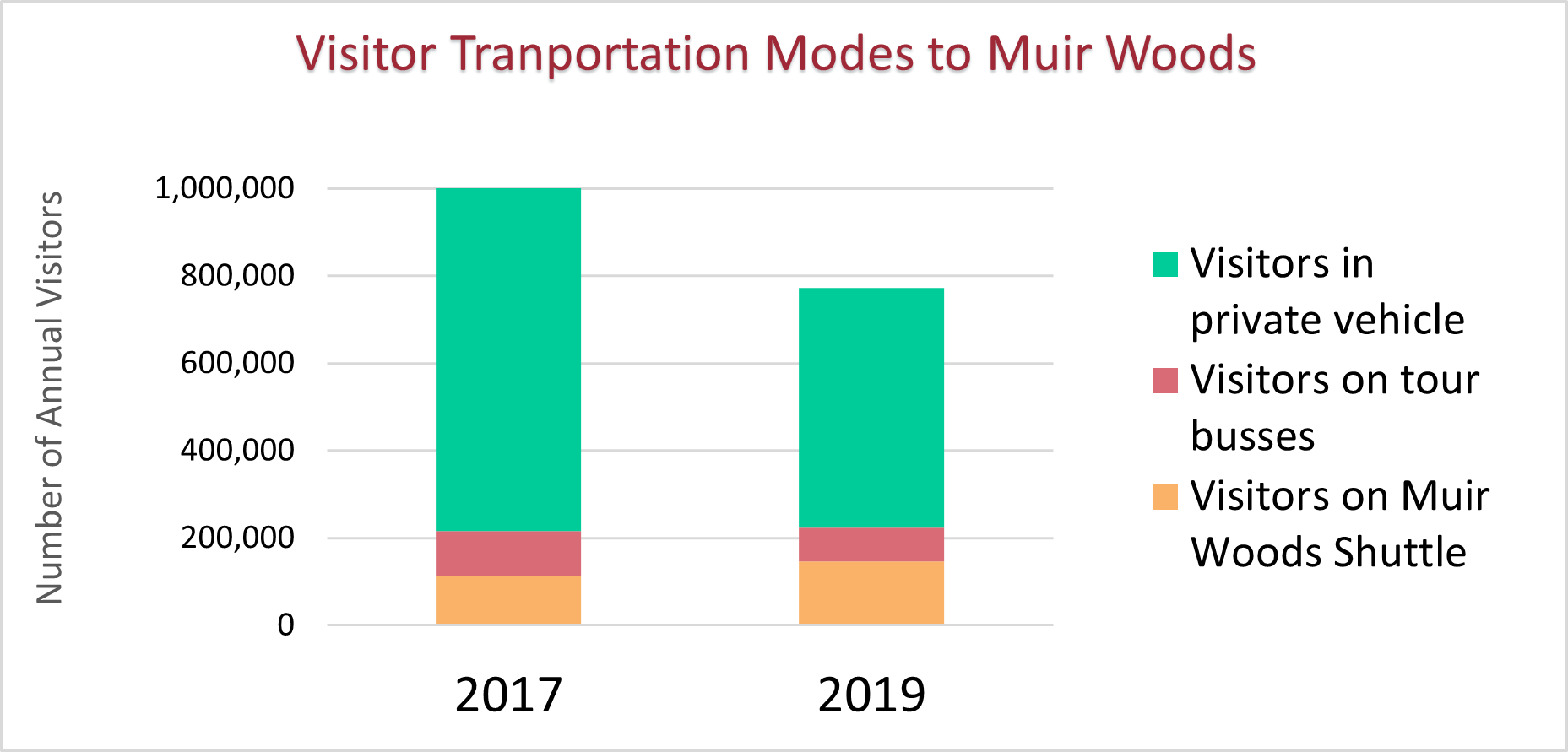Last updated: December 27, 2022
Article
Reducing the Carbon Footprint at Muir Woods

Image from National Park Service
Muir Woods National Monument, a popular destination in Marin County, receives almost a million visitors yearly with daily numbers up to 6,000. Most visitors currently arrive in their personal vehicles, although some visitors take advantage of the Muir Woods Shuttle operated by Marin Transit. In addition, some visitors arrive on tour busses, mainly coming across the Golden Gate Bridge from San Francisco.
Prior to 2018, visitors experienced a high volume of traffic that led to congestion in the parking lots and back up the roads leading into them. This created a bottleneck with unsafe and illegal parking occurring along the shoulders of Muir Woods Road. Not only was this unsafe for our visitors, but the National Park Service recognized the increasing environmental impacts along Redwood Creek, as well as the increasing atmospheric emissions.
To reduce these negative impacts, a concession contract was established in 2018 with Ace Parking Management to make the flow of visitation to Muir Woods more sustainable. Visitors must now reserve a parking spot to enter the park, set for a specific window of date and time. The park has established a cap for vehicles coming to the woods, accessed through its website GoMuirWoods.com. As a result, the park has seen an increase in the use of the Muir Woods Shuttle that provides visitors an alternate way to access the woods. A Commercial Use Authorization (CUA) has also been established for tour busses, limiting their daily arrivals.
Since the reservation system was established, traffic congestion has been reduced, with the beneficial affect of allowing visitors to spend more time in the park instead of competing for a limited number of parking spaces.

Image from National Park Service
To document the reduction in carbon emissions from implementation of the reservation system, Golden Gate National Recreation Area (GGNRA) staff analyzed the carbon footprint from visitation before and after the reservation system was implemented. Using the Climate Leadership in Parks (CLIP) Tool developed by the National Park Service's Climate Friendly Parks Program, we were able to show that both the reservation system for visitors and the CUA for tour busses reduced the carbon footprint for Muir Woods.
Figure 1 shows a comparison between emissions from transportation to Muir Woods before and after the reservation system. The reservation system was able to reduce the average carbon footprint per visitor. Figure 2 shows how the number of visitors in each mode – private vehicles, tour busses, and the Muir Woods Shuttle – changed between 2017 and 2019.
Visitors to Muir Woods now have a less stressful experience and can enjoy less crowding in the woods… and can now feel even better about lessening their contribution to climate change. Moreover, this effort to measure the reduced carbon footprint from traffic management changes at Muir Woods can be applied elsewhere in GGNRA, helping the park with our climate action goals.
